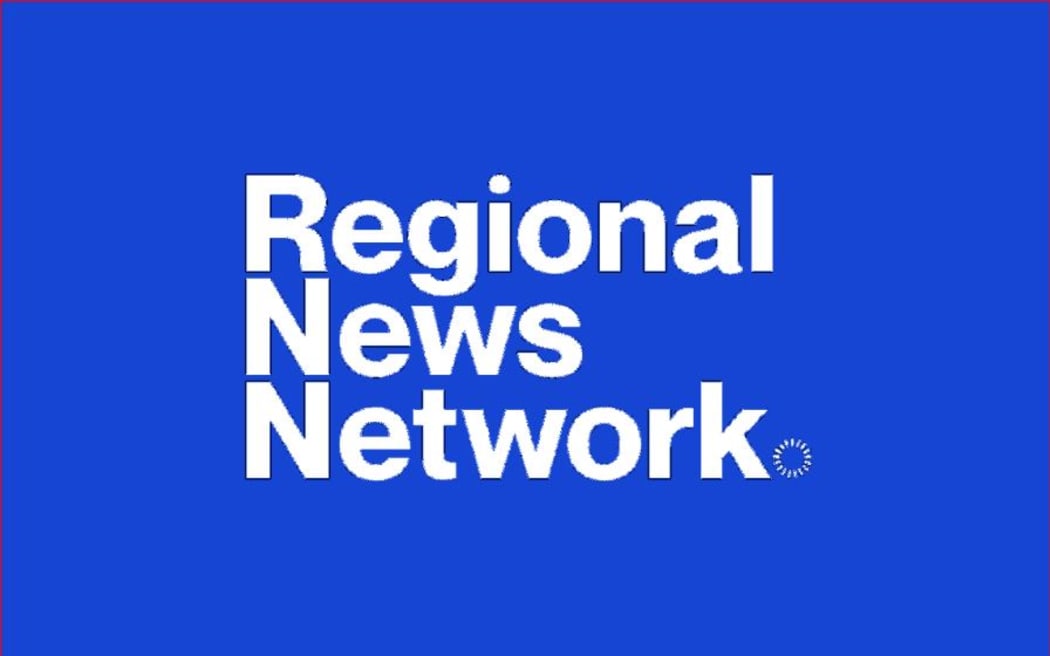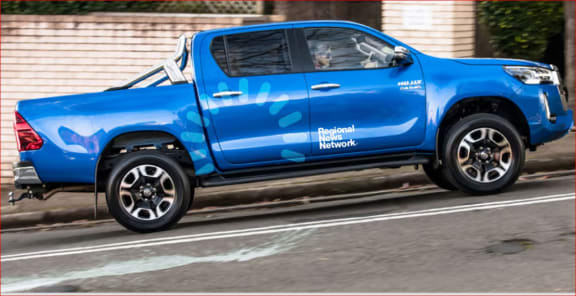This week ads for a new start-up appeared seeking reporters in the regions - and offering salaries reporters only get in the big cities these days. What is Regional News Network? How does it plan to set up the sort of regional coverage big news outlets have struggled to maintain in recent years?

Regional News Network's logo. Photo:
When the government recently boosted RNZ’s budget, Broadcasting Minister Willie Jackson said $3.3 million was set aside "to make National Radio 'national' again because some of the regional services have been restricted or limited."
These days RNZ only has full-time reporters in a handful of places outside its Auckland and Wellington headquarters, or smaller bureaux in Christchurch and Hamilton.
Other news media outlets cutting back in the regions prompted the publicly-funded Local Democracy Reporting service in 2019. LDR is run by RNZ and covers the cost of reporters in local newsrooms around the country which might otherwise struggle to employ enough journalists to cover significant local and civic stuff.
Since 2020, it has been funded via the Public Interest Journalism Fund (PIJF), a three-year initiative which announced its final grants of public money this week. Among them was funding for journalists' jobs in Waikato, Marlborough, Bay of Plenty, Coromandel, Tai Rāwhiti, Otago and some local Auckland communities.
But with PIJF now out of time and money, the long-term future of those roles is in doubt.
This week, adverts appeared online seeking expressions of interest from reporters in regional New Zealand for a new news network - and advertising salaries reporters might expect only in the big towns and cities.
"Pay rates for senior journalists will be in the $90,000 - $120,000 range while juniors will be paid $50,000 - $70,000," ads for Regional News Network said - along with an employee share scheme, a company car and other benefits.
But the RNN name is not yet familiar to the journalists it is seeking.
RNN is a start-up that is just starting up but has plans to cover 17 locations with a senior and a junior journalist in each, with a head office in Queenstown, and a technical and commercial HQ in Auckland.
None of the 17 locations they have in mind are metropolitan. The idea is to create a national network sharing news from under-reported regions.

Photo:
The co-founder and chief editor of RNN is Peter Newport, formerly a journalist for several New Zealand news organisations before he set up his own in Queenstown.
Crux has covered news in the Southern Lakes region since 2018 and it is the model he hopes to establish in regions around the country with RNN.
"Crux has been an experiment to see if there's an appetite and a market for robust local news. What tends to happen with community media - and newspapers in particular - is they tend to adopt a community stance, so there isn't much holding of power to account," Newport told Mediawatch.
"What we've tried to do with Crux is prove that holding power to account is even more important in the regions than it is in urban areas," he said.
"But what we haven't achieved is economies of scale. We've discovered that it's only by networking the Crux model that it's going to be sustainable," he said.
"We think what the RNN will bring is scale - mixed with the ethos of the LDR so that journalists have more strength, are better paid, and they have more resources."
RNN has done market research and engaged an agency to work up its branding and livery alongside the business model.
"Our model includes high pay for senior journalists who in effect become an editor ... running their own publication. All the technology and the sales are centralised," Newport said.
"Those journalists will be producing 40 to 60 stories a day across the network, some of which will only be of interest locally, some of which will be of interest nationally. We think people who live in Wellington, Christchurch and Auckland will also be interested in reading their stories."

The Crux homepage Photo: screenshot / Crux.org.nz
But employing reporters on high salaries and establishing a national network in 17 locations will be difficult and expensive.
Something similar in Australia - News.Net - had plans to employ 170 people in Australia to launch hundreds of local news websites on one online portal in 2021. But even after experienced news people were hired - and investors from New Zealand got on board - it never got off the ground.
"We've done some advanced modelling looking at how the money moves and tested it quite ruthlessly," Newport said.
The business brain behind Regional News Network is Tim Martin, the former founder of sports streaming services Rugby Pass and Coliseum and more recently - but just briefly in 2022 - the chief executive at NBR.
"I think serious hard news ... is a really strong product. It's probably a stronger product in New Zealand than rugby, with more potential and a broader reach," Martin told Mediawatch.
That's fighting talk.
But if local media companies like the newspaper chains have struggled to employ enough journalists for local coverage, can it be done online by a new player paying higher salaries?
"Hyperlocal journalism is underserved in the regions. We think that we can build a business that is complementary to the ones that exist, I don't see us as anything like competitors to NZME," he said.
"I don't think we'd be doing this if we felt [it] is a massive priority for any one of those big media companies. If we're fighting on a daily basis NZME, RNZ and Stuff, that's going to be really challenging. I think if we just stick to what we're good at and what we're doing that is unique, then we'll find a way to exist in the landscape," he said.
New Zealand’s two newspaper publishers - NZME and Stuff - also have huge and established online audiences and established advertisers.
Isn't it going to be difficult for a new network to compete, particularly without a presence in metropolitan areas?
"If you think about New Zealand's economy, 90 percent of the products that we sell overseas are from the regions. That's what New Zealand's economy is about ... and that's where those stories are happening," Martin said.

The RNN livery - as on a news vehicle - could be seen around the country if the founders get the investors and staff they're seeking. Photo: supplied
"We have to present a business case that delivers a good return on investment for any investor. So sustainability is fundamental. There's no 'quick buck' about this. This is a project that won't go ahead ... if we cannot raise the money," he said.
"This isn't the sort of project that you can roll out region-by-region. It's either a regional news network, or it's nothing at all,” Martin told Mediawatch.
"The key to it is that this is a market of 30,000 regional advertisers, spending somewhere between $5000 to $10,000 a year on average. Those are the advertising contracts we need to go and get through a local platform."
Helping hand from public purse?
In recent times, the government - via NZ on Air - has kicked in more money for journalism, most explicitly through the three-year Public Interest Journalism Fund which now is coming to an end. Newport’s Crux has been a beneficiary of that.
"The problem for government is that the funding of journalism became very controversial because of just the way PIJF was perceived. The impression we're getting is they're not going to do anything like PIJF anytime soon," Newport told Mediawatch.
"We're also looking at the wreckage of the merger and recognising - like the government - the problems that was designed to address are still there," Newport said.
"There's a role to play for government - and certainly in our talks, it feels like we're pushing an open door in the sense that everybody recognises democracy depends on journalism," he said.
"This project provides the opportunity to back journalism without ... those things that can be misconstrued by the public as interference. But we also think private investment is there.
"Our model is for local salespeople to be selling local advertising. We can also take national products like cars or banks to the regions. We think readers do want to support journalism, but it's not big bucks.
"We think Meta and Google will have a role to play, but their position at the moment is that they're suffering and I don't think that's going to be an easy negotiation.
"There'll be room for us to share our content ... so we're very much looking at some revenue from our output being licensed to a national platform. In addition to that, we think there will be some government funding."

